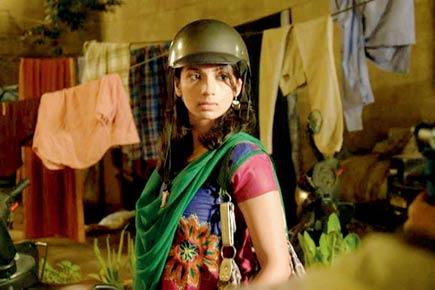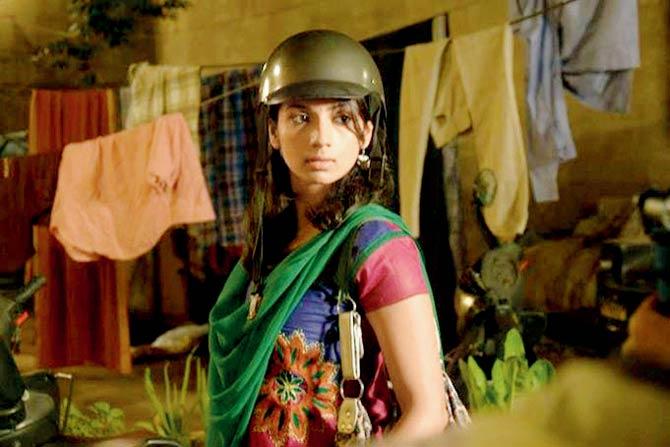This is a Bangalore film diary okay Bengaluru where I was on assignment recently

![]() This is a Bangalore film diary okay Bengaluru where I was on assignment recently. I couldn’t wait for a taste of the city, and asked the driver of the airport pick-up car to pause at the nearest Iyengar bakery, and picked up an “alu bun” (with potato filling) and “khara bun” (with potato filling). I couldn’t tell the difference, but I didn’t care, as it is not often in Bombay that I get to eat buns hot off their oven tray—unless I schlep it to Yazdani Bakery in Fort.
This is a Bangalore film diary okay Bengaluru where I was on assignment recently. I couldn’t wait for a taste of the city, and asked the driver of the airport pick-up car to pause at the nearest Iyengar bakery, and picked up an “alu bun” (with potato filling) and “khara bun” (with potato filling). I couldn’t tell the difference, but I didn’t care, as it is not often in Bombay that I get to eat buns hot off their oven tray—unless I schlep it to Yazdani Bakery in Fort.

A still from the film Lucia
ADVERTISEMENT
I was in Bengaluru as Script Mentor on Clinik, a week-long, South Asian Filmmaker’s Lab run by Docskool, Nepal, whose partners included Cinemart of the International Film Festival Rotterdam, Open Doors of the Locarno Film Festival, the Suchitra Film Society and Centre for Film and Drama, Bangalore. It was a script and co-production lab to support nine young filmmakers from India (with special focus on the North East), Sri Lanka, Pakistan, Nepal and Myanmar. My fellow mentors included those who work or have worked with the Locarno, Venice and Cannes film festivals, as well as producers like Kartikeya Narayan Singh, co-producer of Gurvinder Singh’s Chauthi Koot, the Indo-French co-production that was at Cannes this year.
Indian film buffs generally know a lot more about American, French, German, Iranian and Korean cinema, than about the cinema of our neighbours, Sri Lanka, Bangladesh, Pakistan, Nepal and Myanmar. There are many powerful and compelling films from these nations, and it would be worthwhile to develop closer regional film ties, and at least an online South Asian film market. Of course, I have a particular interest in the region as South Asia Consultant to the Berlin Film Festival, and have been keenly watching Clinik’s projects as their script mentor since last year. This year’s projects were promising and diverse, and I was also struck by how savvy young filmmakers are trying to expand their potential audiences through bilingual films. The Assamese project is in Assamese and Hindi; the Pakistan-US project is in Urdu and English, and interestingly, the Nepali project is in Nepali and Bhojpuri, to appeal to cross-border audiences in North India. Following Clinik, I gave an illustrated lecture on ‘Creative Spaces in South Asian Cinema’ for the Media Lab of the Indian Institute for Human Settlements, Bengaluru, which runs the Urban Lens Film Festival and filmmaking courses. It is always heart-warming when you’re lecturing in another city, and they have to add more chairs to accommodate the audience.
Clearly, the compulsions of the language economics of new filmmaking, was the theme of the week. I met Pawan Kumar, the poster boy of new Kannada cinema, at Koshy’s, over Malaysian kaya toast and mint tea. His film Lucia, in Kannada — about a theater usher who has a life changing experience and dreams of being a movie star — has become a cult film for its treatment and the way it has rewritten the rules of Kannada filmmaking. He told me he is considering making his next film in Tamil and possibly, Malayalam. Another young director from Bengaluru, whose debut feature was in Kannada, is also considering making his second film in Tamil, which has a wider language footprint than Kannada, in order to secure a healthy release in his own city. This is truly ironic, though not a new dilemma.
Speaking to Kumar, I realised how the traditional role of a director is being rapidly redefined in the new economy. Kumar raised the budget for Lucia through crowd-funding, won an award and acclaim at international film festivals, and had a decent run at the box office. Then Fox Star Studios India bought its Hindi remake rights, and producer CV Kumar bought its Tamil and Telugu remake rights, while its broadcast rights were sold to Udaya TV of the Sun Network. All these are remarkable achievements for a modest-budget Kannada film — the equivalent of a Marathi film — in terms of regional
language footprint.
But crowd-funding can bring its own challenges. “For Lucia, the difficult demands usually came from those who had contributed smaller amounts,” he said. He had received contributions as pre-orders to view the film online or order DVDs, but it generated enough buzz to get a theatrical release, forcing him to postpone the online release. For a crowd-funded film, I asked if he had someone handling his social media. “No,” said Kumar, “The personal touch is what counts for online contributors. So I would come in exhausted from the day’s shooting and respond daily to a massive number of emails. I was writing from four different email accounts — it was totally crazy.” His next film C10H14N2 (for nicotine), has already got nearly Rs 2 crore via crowd funding. But this time round, he is exploring an alternative filmmaking model, giving contributors the equivalent of shares in his company, in a bid to protect his artistic freedom, and yet make money for his producers. I realise that in addition to artistic ambitions, today’s film directors need to be much more savvy about finance, marketing, accountancy, law and social media as well. Sigh!
Meenakshi Shedde is South Asia Consultant to the Berlin Film Festival, award-winning critic, curator to festivals worldwide and journalist. She can be reached on meenakshishedde@gmail.com. The views expressed in this column are the individual’s and don’t represent those of the paper.
 Subscribe today by clicking the link and stay updated with the latest news!" Click here!
Subscribe today by clicking the link and stay updated with the latest news!" Click here!







